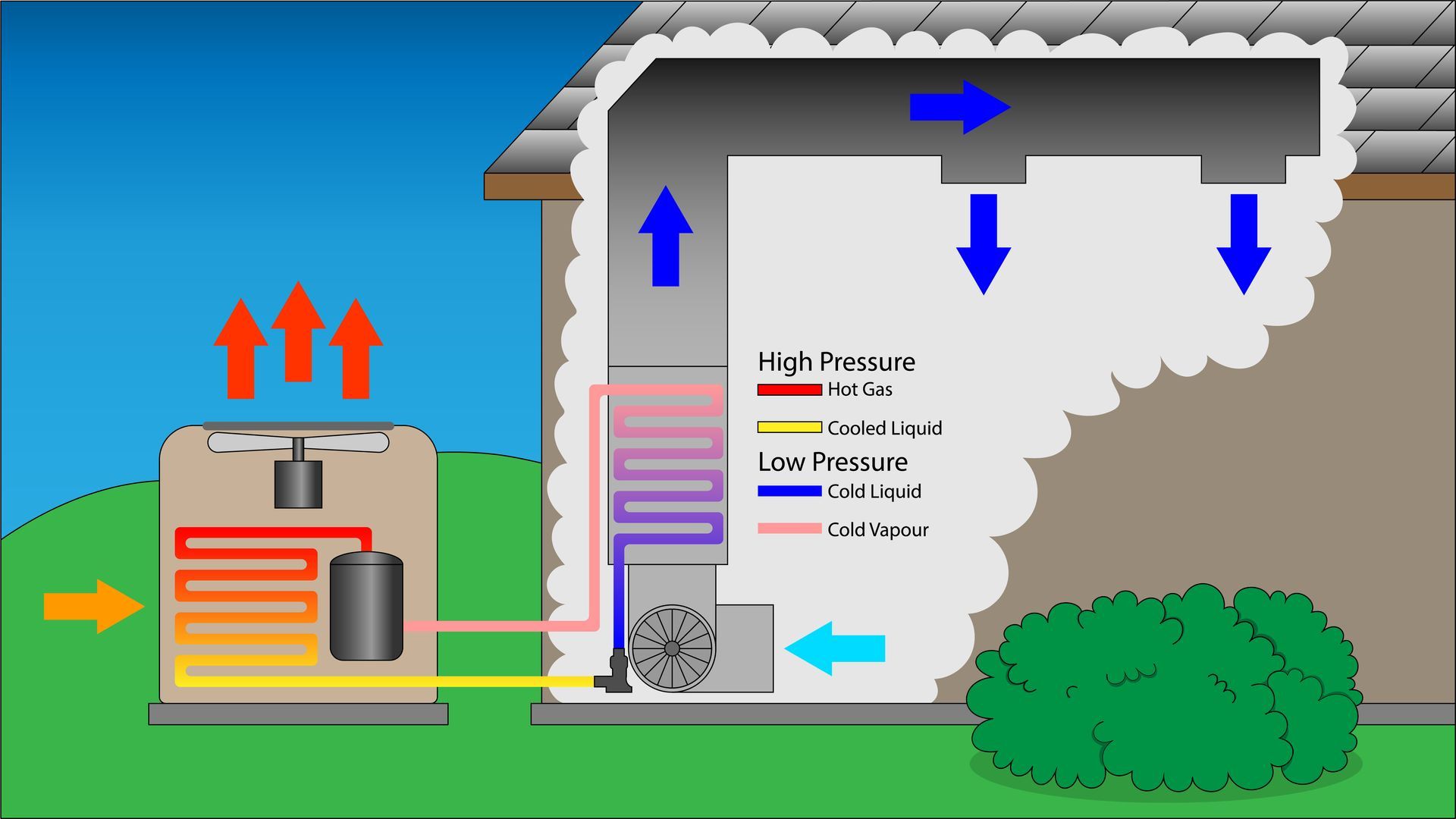ADDRESS: 18565 Soledad Canyon Road, Santa Clarita CA. 91351
CALL US NOW
As a homeowner or business owner, you know how important it is to have a comfortable and safe environment inside your building. That's where your HVAC system comes in. HVAC stands for heating, ventilation, and air conditioning, and it's responsible for controlling the temperature and air quality inside your home or business.
The furnace or heat pump is the component that generates heat to keep the building warm. Furnaces typically burn natural gas, oil, or propane to produce heat, while heat pumps use electricity to transfer heat from the outside air or ground into the building. Furnaces have a burn chamber where the fuel is burned, and a heat exchanger that transfers the heat generated by the combustion of fuel to the air that is distributed throughout the building using a system of ducts and vents. A heat pump, on the other hand, uses a refrigerant, which is circulated through a series of coils to absorb heat from the outside air or ground and transfer it inside the building.
The air conditioner is the component that removes heat from the building to keep it cool. Air conditioners work by circulating refrigerant through a system of coils. As the refrigerant absorbs heat from the inside air, it evaporates and travels to the compressor. The compressor then compresses the refrigerant and raises its temperature, which causes it to release the absorbed heat into the outdoor air through the condenser coils. This process cools the air inside the building, making it more comfortable to occupy.
The ventilation system plays an important role in maintaining good air quality by circulating the inside air and bringing in fresh air from outside. The ventilation system typically includes a series of ducts and vents that distribute the air throughout the building. It also includes filters that remove pollutants and allergens from the air. The system can also include an air-handling unit (AHU) which is responsible for controlling the temperature, humidity, and air movement of the air that is distributed throughout the building.
The thermostat is the component that controls the temperature within the building. It sends signals to the furnace, air conditioner, and ventilation system to turn on or off as needed based on the temperature settings. The thermostat can be programmable or smart, which allows the occupants of the building to set a desired temperature, schedule temperature changes, and control the HVAC system remotely.
Regular maintenance of your HVAC system is essential to ensure it continues to function efficiently and effectively. This includes changing air filters, cleaning ducts, and scheduling annual inspections with a professional HVAC technician. The technician will check for any leaks, clogs, or wear and tear in the system, and make any necessary repairs or adjustments to ensure optimal performance. By maintaining your HVAC system, you can help extend its lifespan, improve indoor air quality, and lower energy costs.
Energy Guide label
Manufacturers of HVAC equipment are required to display the Energy Guide label. This label estimates how much energy the equipment uses, compares energy use of similar products, and gives approximate annual operating costs. Your exact costs will depend on local utility rates and the type and source of your energy.
ENERGY STAR certification
ENERGY STAR is a voluntary energy awareness program developed by the U.S. Department of Energy and the Environmental Protection Agency (EPA). Our high-efficiency systems have the Energy Star label to identify products that are at least 15% more efficient than standard products.
WHY YOU SHOULD CHOOSE ACTIVE AIR HEATING AND AIR SPECIALISTS.
Purchasing a new furnace, air conditioner, or heat pump setup is a major decision – ranking just behind paying for your home, your cars, and your children's college education. You want it done right, and we are a trusted AC contractor who will do just that. From design to installation, we guarantee your system and your satisfaction with our company. We look forward to enhancing the quality of your indoor comfort control.
The heating, ventilation, and air conditioning contractor selected to inspect, upgrade or install an air conditioning system is as critical to the system's successful operation as the equipment itself.
Read more about us on our about us page.

Main Office 866-873-0677
ADDRESS: 18565 Soledad Canyon Road, Santa Clarita CA. 91351
PHONE: 866-873-0677
EMAIL: activeairsocal@gmail.com
BUSINESS HOURS
Mon - Fri 8:00 am - 5:30 pm





